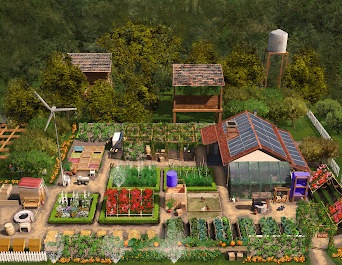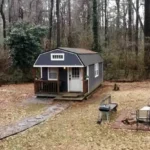
Off-grid living is a lifestyle that involves living without access to public utilities such as electricity, water, and gas. While this lifestyle may seem daunting, it offers a sense of independence, self-sufficiency, and sustainability. However, off-grid living requires a lot of planning, preparation, and hard work. In this article, we will discuss the key aspects of off grid life, including heating, water, power, and food.
Lets Look at Heating
Heating is essential for off-grid living, especially in cold climates. There are several options for heating off-grid homes, including wood stoves, propane heaters, and solar heaters.
Wood Stoves: Wood stoves are a popular option for off-grid homes because they are reliable, efficient, and can be used for cooking. However, wood stoves require a lot of work, such as chopping the wood, cleaning the stove, and maintaining the chimney. Additionally, wood stoves can be dangerous if not used properly.
Propane Heaters: Propane heaters are a convenient option for off-grid homes because propane is easy to store and transport. Propane heaters are also efficient and can be used for heating and cooking. However, propane is expensive, and the cost can add up quickly.
Solar Heaters: Solar heaters are a sustainable option for off-grid homes because they use renewable energy from the sun. Solar heaters are also low-maintenance and can be used in conjunction with other heating options. However, solar heaters require a lot of planning and installation, and they may not be suitable for all climates.
When choosing a heating system for your off-grid home, it’s important to consider the cost, efficiency, and sustainability of each option. You should also consider the climate and the size of your home. A combination of heating options may be the best choice for your off-grid lifestyle.
Water

Access to clean water is essential for off-grid living. However, finding and purifying water can be a challenge. There are several methods for collecting and purifying water, including rainwater harvesting, well drilling, and water filtration systems.
Rainwater Harvesting: Rainwater harvesting involves collecting rainwater from roofs and storing it in tanks. Rainwater can be used for drinking, cooking, and bathing. However, rainwater must be filtered and purified before use.
Well Drilling: Well drilling involves drilling a hole in the ground to access groundwater. Well water is usually clean and does not require purification. However, well drilling can be expensive and may not be an option in all locations.
Water Filtration Systems: Water filtration systems involve filtering and purifying water from natural sources such as rivers and lakes. Water filtration systems can be expensive, but they are effective at removing contaminants and producing clean water.
Conserving water is also important for off-grid living. You can conserve water by using low-flow fixtures, taking shorter showers, and reusing grey water for irrigation.
Power
Generating power off the grid is a challenge, but it’s essential for modern living. There are several renewable energy sources for off-grid homes, including solar, wind, and hydro power.
Solar Power: Solar power involves capturing energy from the sun and converting it into electricity. Solar panels can be installed on rooftops or on the ground. Solar power is reliable and sustainable, but it can be expensive to install.
Wind Power: Wind power involves capturing energy from the wind and converting it into electricity. Wind turbines can be installed on rooftops or on the ground. Wind power is reliable and sustainable, but it can be noisy and may not be suitable for all locations.
Hydro Power: Hydro power involves capturing energy from flowing water and converting it into electricity. Hydro power can be generated from streams, rivers, or waterfalls. Hydro power is reliable and sustainable, but it can be expensive to install and may not be suitable for all locations.
When choosing a renewable energy system for your off-grid home, it’s important to consider the cost, efficiency, and sustainability of each option. You should also consider the climate and the size of your home. A combination of renewable energy sources may be the best choice for your off-grid lifestyle.
Food
Growing your own food is a key aspect of off-grid living. It provides a sense of self-sufficiency and sustainability. There are several gardening techniques for off-grid living, including permaculture and hydroponics.
Permaculture: This involves designing a garden that mimics the natural ecosystem. Permaculture gardens are low-maintenance, sustainable, and produce a variety of crops. However, permaculture requires a lot of planning and may not be suitable for all locations.
Hydroponics: Hydroponics involves growing plants in nutrient-rich water instead of soil. Hydroponic gardens are low-maintenance, space-efficient, and produce high yields. However, hydroponics requires a lot of planning and equipment.
Storing and preserving food without electricity is also important for off-grid living. You can store food in root cellars, canning jars, and dehydrators.
Conclusion
Off-grid living offers a sense of independence, self-sufficiency, and sustainability. However, it requires a lot of planning, preparation, and hard work. Heating, water, power, and food are key aspects of off-grid living. When choosing a system for each aspect, it’s important to consider the cost, efficiency, and sustainability of each option. By focusing on these key aspects, you can live a fulfilling and sustainable off-grid lifestyle.






